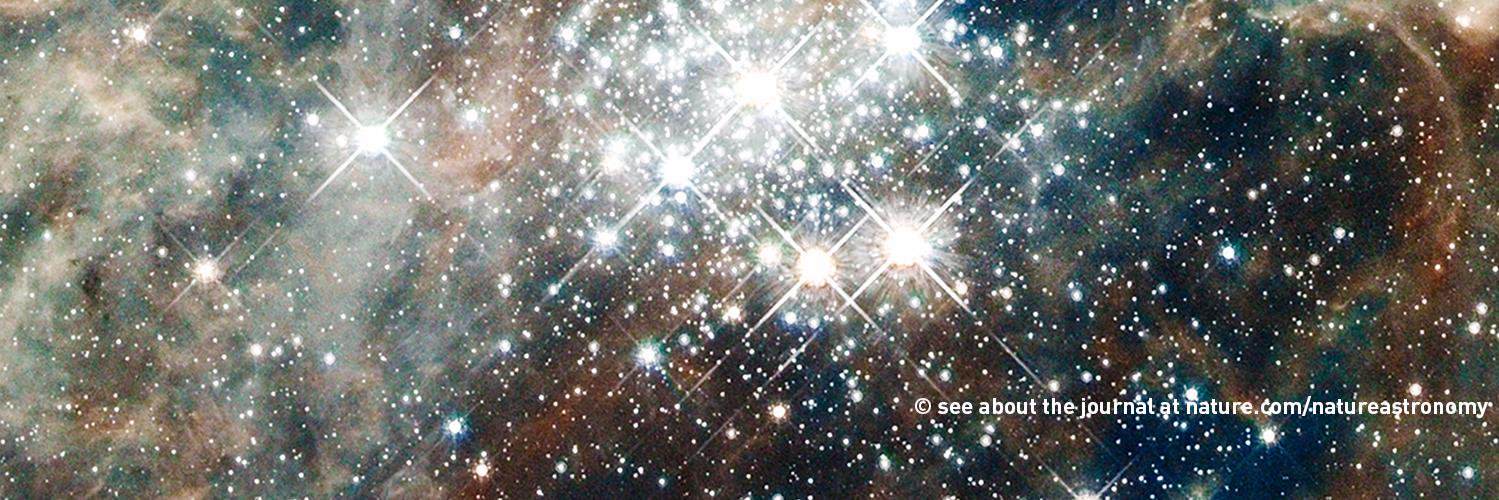
Nature Astronomy
@NatureAstronomy
A Nature journal dedicated to presenting the very best research across the disciplines of astronomy, astrophysics, cosmology and planetary science.📡
Our June(teenth) issue is now here to read: bit.ly/3SWLNVA The cover image depicts a ticking time bomb... a supernova progenitor on our doorstep! But don't worry, we still have a good 20 billion years until it goes bang.
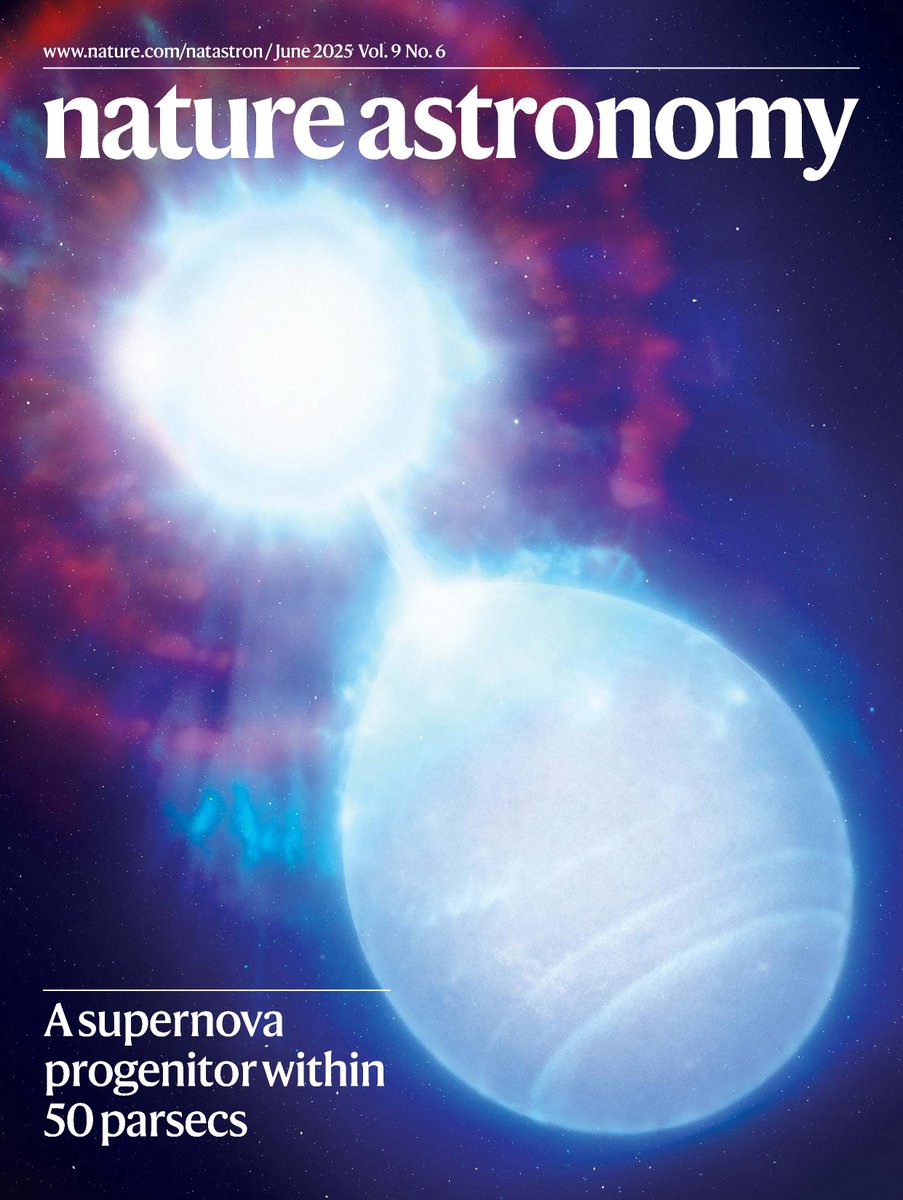
The Thirty Meter Telescope, long slated for construction in Hawaii, might be getting a new home go.nature.com/3IIjGaM
The Milky Way is moving through the Universe and its path is influenced by the combined gravitational pulls of nearby galaxies, such as Andromeda, the Triangulum galaxy and the Large Magellanic Cloud. @NatureAstronomy @NaturePortfolio
The #RubinFirstLook images are out...
Introducing...your sneak peek at the cosmos captured by @NSF–@doescience Vera C. Rubin Observatory! Can you guess what regions of sky they are? This is just a peek...join us at 11am US EDT for your full First Look at how Rubin will #CaptureTheCosmos! ls.st/rubin-first-lo…
Gessey-Jones et al. show that future radio telescopes will be able to reveal the mass distribution of the first stars in the Universe by detecting their impact on a faint radio signal of hydrogen atoms from Cosmic Dawn. bit.ly/4lgkBNF @cambridge_astro
The precessing jet in M87, exhibiting an unexpectedly broader width in the inner region, is found to be linked to a compact, tilted accretion disk, providing new insights into the jet-disk-BH configuration and formation. Cui & Lin: bit.ly/3GcSq34

The Fermi-LAT collaboration reports a significant γ-ray detection (5.2σ) from the coronae of radio-quiet AGNs, revealing compact (∼10 gravitational radii) and extended (∼2.7×10⁶ gravitational radii) coronal regions, challenging existing models. bit.ly/4kTBn5s

In a new study in @NatureAstronomy, scientists from the Jackson School took a close at Mars' thick clay terrains. They found that these areas could have provided the right mix of water, minerals and a calm environment for life to develop. Read more: jsg.utexas.edu/news/2025/06/t…
The Martian terrain has influenced its early surface evolution, allowing regions of stable chemical weathering to develop and permanently trap water and minerals, weakening Mars’ climate feedback and limiting long-term hydrological activity. Moore et al.: bit.ly/440MrX5
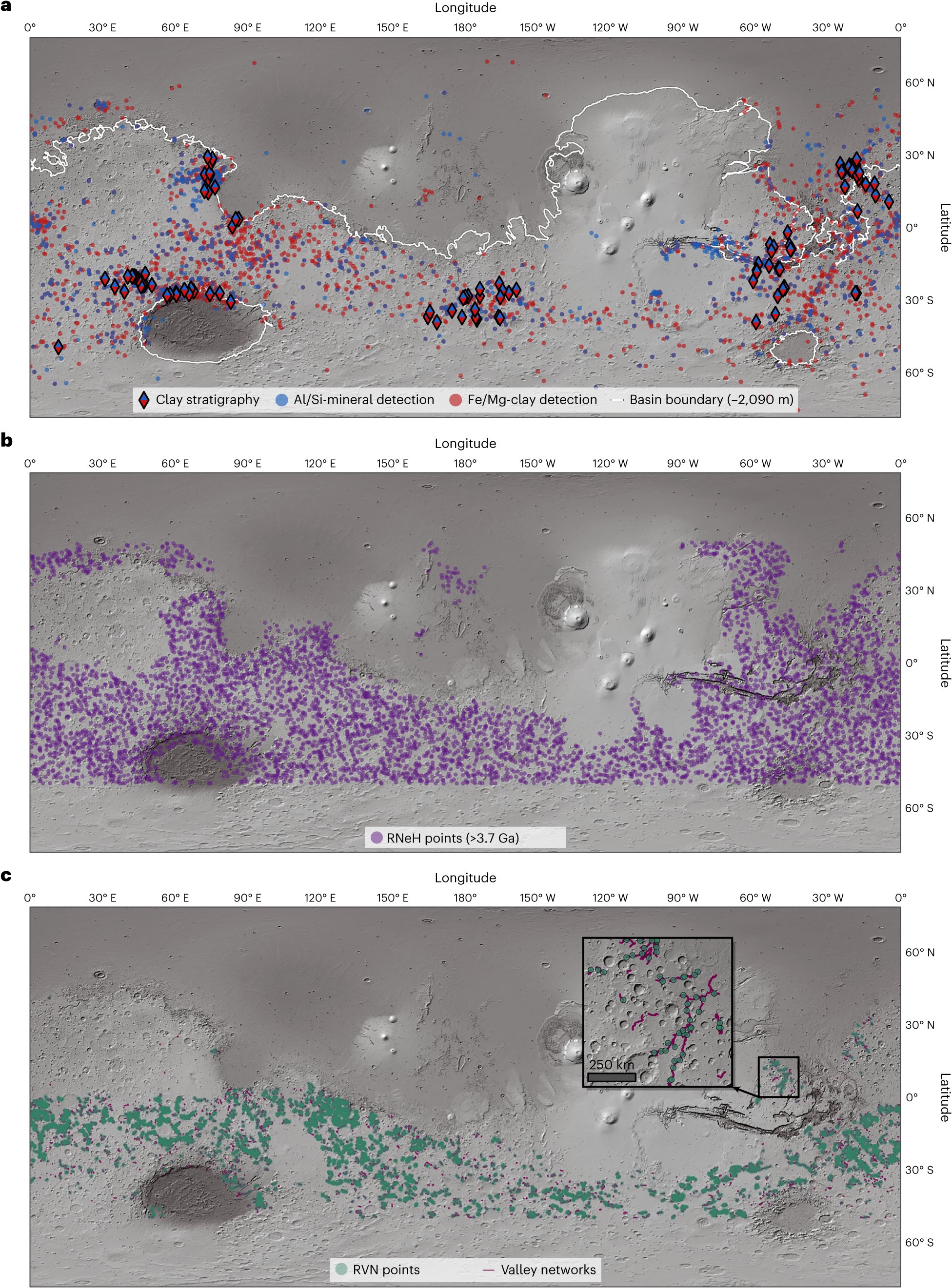
Using a large cosmological sample of fast radio bursts, Connor et al. have measured the Universe’s missing baryons, finding that most reside in the diffuse intergalactic medium, not galaxies — confirming strong astrophysical feedback seen in simulations. bit.ly/4kLSar5
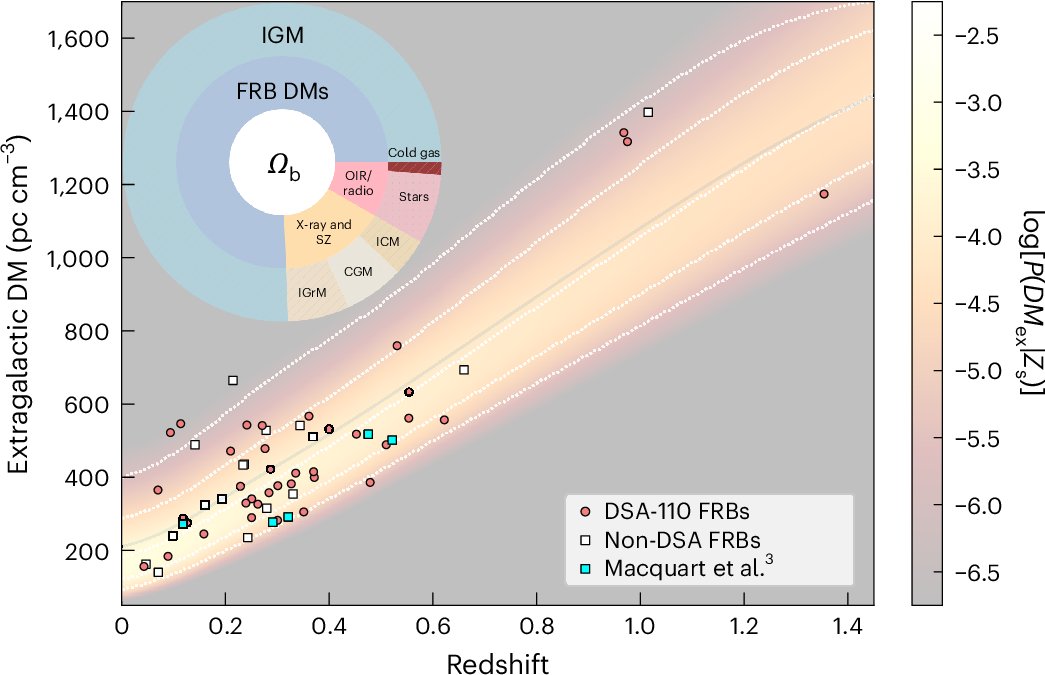
Simulations of long-term atmospheric evolution show that rocky planets with Earth-like masses in the classical Habitable Zone of Sun-like stars can retain thick He-dominated primordial atmospheres. Lammer, Scherf et al.: bit.ly/44cwjmB
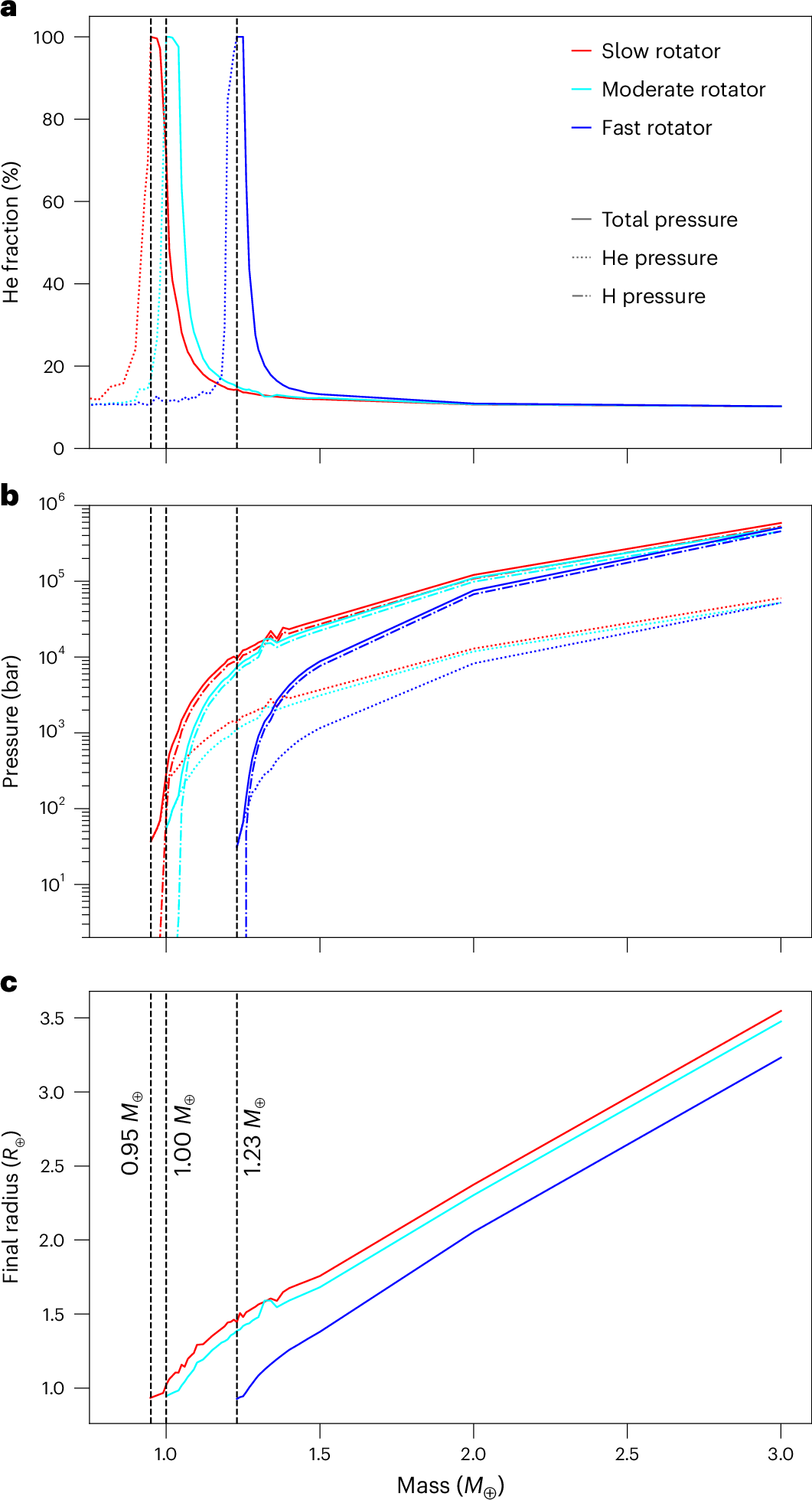
A paper in @NatureAstronomy presents an optic system that produces high-resolution observations of fine structures in the Sun’s corona by lifting the veil of atmospheric blur over a fast-moving, twisted plasma stream as it becomes unstable. go.nature.com/4mKWDeN
Multi-instrumental data analysis reveals a giant exoplanet in orbit around the 0.2 M_sol star TOI-6894. This system poses strong challenges to planet formation theories and is an excellent target for atmospheric characterisation. Bryant et al.: bit.ly/3HJzYiU
A 10 M⨁ planet is detected in the habitable zone (HZ) of the solar-type star Kepler-725 using the transit timing variations technique. This study proposes a complementary pathway to probe low-mass exoplanets in the HZs of Sun-like stars. Sun et al.: bit.ly/3FCli4C

The likelihood of a collision between the Milky Way and its neighbouring galaxy Andromeda may be smaller than previously thought, according to a new simulation described in @NatureAstronomy. go.nature.com/3ZO7ta3
. @Hubble_space and @ESAGaia join forces to revisit the fate of our galaxy. Doubt is cast on the long-held prediction that the Milky Way galaxy will collide with the Andromeda galaxy in about 4.5 billion years. Read more 👉 esa.int/Science_Explor…
Our galaxy is on a collision course with Andromeda, right? Not so fast. New calculations using HST & Gaia data and accounting for the effect of Magellanic Clouds show an almost 50% chance of the Milky Way avoiding this fate. Sawala et al.: bit.ly/3ZLjWv4

JWST/MIRI observations of both Pluto and Charon uncover surface properties and reveal that Pluto’s haze plays a key role in controlling the atmospheric temperature. Bertrand et al.: bit.ly/4js9obh

JWST observations suggest that both pebbles and planetesimals played important roles in forming the giant exoplanet WASP-121 b beyond the H2O ice line. Also, strong vertical mixing likely drives the nightside atmospheric chemistry. Evans-Soma et al.: bit.ly/3FFvj0Q

High-res observations of fine structure in the Sun’s corona hint at plasma features on the order of 10 km. A new adaptive optics system reduces atmospheric image blur over a twisted plasma stream travelling at 90 km/s as it becomes unstable: bit.ly/4mC1Fdx #AstroSci